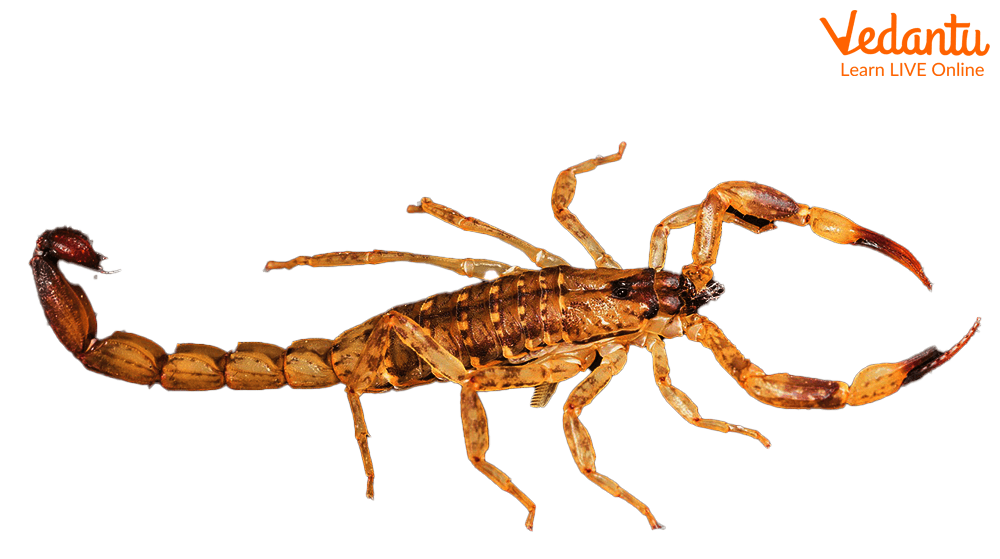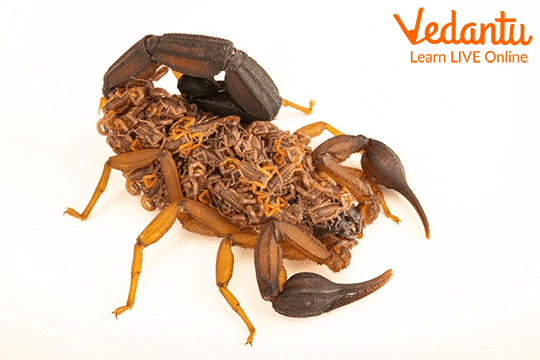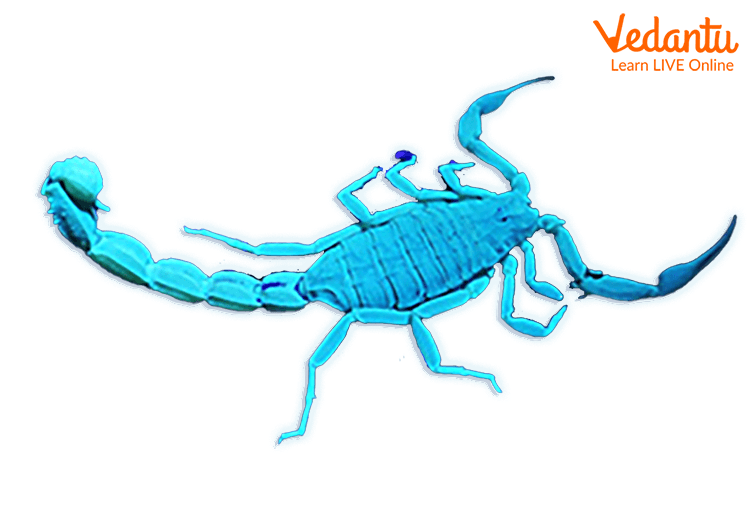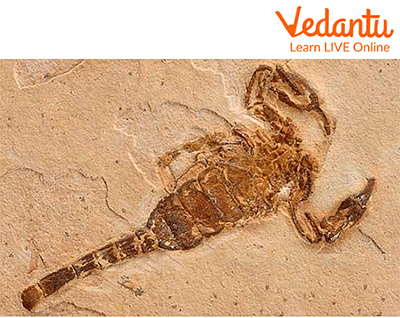




Overview
Introduction
Scorpions are believed to be so poisonous that their sting can even kill an individual, but all the species of scorpions are not poisonous. You might wonder how dangerous scorpions are, but surprisingly, there are about 1400 different species of them, out of which only 25 species are known to be poisonous to be able to cause the death of an individual.
They are found almost in all habitats around the world except Antarctica, which shows that they have adapted to a wide range of environmental conditions. The scorpions’ size varies from 1.3cm to 21cm. They feed on insects, spiders, lizards, mice, etc.
The poisonous tip of their tail is known as a telson. There is even a constellation named Scorpius, which has its astrological sign as Scorpio. They are also known to be one of the ancestral animals that even existed 435 million years ago.

Scorpion

Interesting Facts About Scorpions
Following are the top 5 scorpions biography facts for kids that you may not know:
1. They are Viviparous:
Unlike other arachnids, they give birth to young ones. They do not lay eggs. The babies may be born between the period of 2 to 18 months from mating. The babies quickly climb up to their mother’s back, which defends them until they are able to move on.

Baby Scorpions on the Back of the Mother
2. They Glow in UV Light:
Their exoskeleton contains some chemicals which glow when UV light (Ultraviolet Light) falls on it. It helps them to locate each other at night during hunting. It is also believed to protect them from sunlight.

Scorpion Glowing in UV Light
3. They Existed Even Before Dinosaurs:
Scorpions are believed to be one of the first creatures which shifted to land from marine habitat. Some fossils show that they existed even before the first dinosaurs on earth and the earliest dinosaurs evolved around 240 million years ago.

Fossil of a Scorpion
4. They have Long Life Spans:
As compared to other arachnids, scorpions have extremely long lifespans. They can live as long as 10 years in the wild and around 25 years in captivity. They can even remain underwater for 48 hours and can remain without food for a year and still survive.
5. They have 6-12 Eyes:
They have 5-10 small eyes other than an obvious pair of eyes at centre. It is interesting to note that despite having so many eyes, they don’t have a really good vision. However, they are sensitive to UV light, moonlight and starlight, thus they can see things even at night.
Scorpions Biography Facts
Let’s explore some more interesting scorpion facts:
No soil, no scorpion! They need soil to dig out small caves, which protects them against heat and cold. However, in urban areas, they take shelter in houses, beds, etc.
They dance before mating, and the breeding is seasonal, that is, it can’t take place at any time around the year. It takes place only during warm months.
Some of the species do not have eyes at all. These species are rare and are only found in dark places like deep down in caves, so having eyes wasn’t useful for them, therefore, they evolved to have no eyes at all.
A scorpion can hold its breath for up to 6 days.
The most poisonous scorpion is the deathstalker and it is interesting to note that a female deathstalker scorpion can give birth to 35-87 offspring in about 155-227 minutes.
Adaptations in Scorpions
Some of the adaptations seen in a scorpion are
They have a hard exoskeleton that provides protection.
Their sting is venomous, which plays an important role in protecting them from their predators.
They also have very low food and water needs, which helps them survive even in extremely harsh environments.
The scorpions are also capable of slowing down their metabolism which enables them to survive without food for almost a year.
They can also hold their breath for about an average of six days, in case of any dire situation.
Multiple Choice Questions (MCQs)
Scorpions are not found in which continent?
Asia
North America
Antarctica
Africa
How long can they remain submerged under water?
36 hours
48 hours
12 hours
42 hours
The poisonous tip of their tail is known as?
Texan
Telson
Exoskeleton
Injection
How many species are poisonous for humans?
25 species
125 species
43 species
All species
Summary
Scorpions are one of the oldest living creatures, which existed long back to 435 million years and shifted from marine habitat to the land of soil. They are characterized by their curved tail and a pair of claws. They use their venomous sting to protect themselves from predators and to hunt their prey. They like to spend most of their time during dark hours, that is, during the night.
All the species are not poisonous enough to kill humans, however, about 25 species are dangerous enough to kill humans. They have evolved a lot over years, and now they are found in all the continents except Antarctica.
FAQs on Scorpions Facts for Kids
1. How many eyes does a scorpion have?
A scorpion has six to twelve pairs of eyes, different in different species, despite having these many eyes, a scorpion does not have good eyesight.
2. What is the best home remedy to treat scorpion stings?
Onions are said to work great with scorpion stings. However, you should always seek medical treatment as soon as possible.
3. Do scorpions have bones?
No, they are invertebrates. They don’t have bones.





















